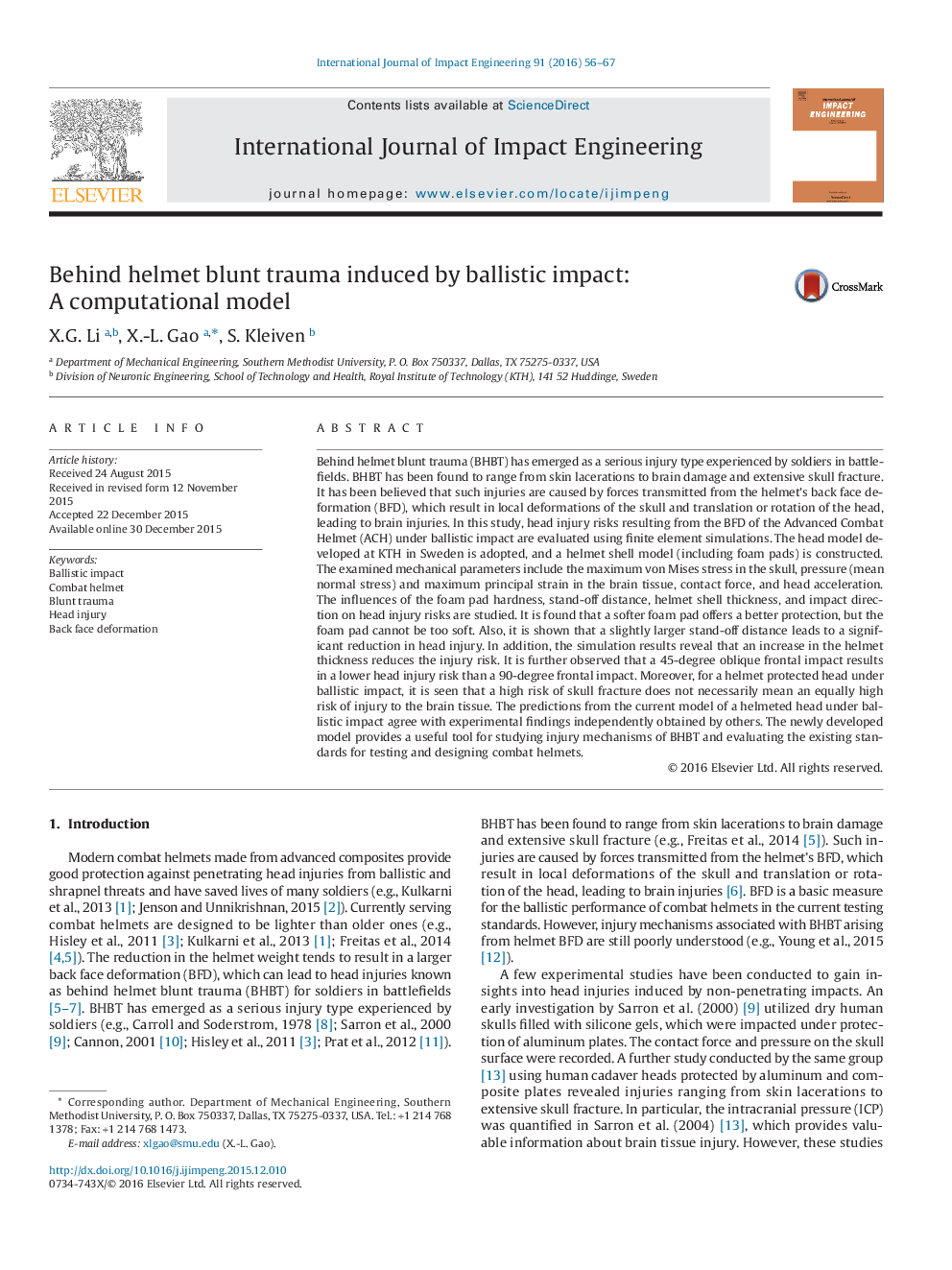| Article ID | Journal | Published Year | Pages | File Type |
|---|---|---|---|---|
| 782796 | International Journal of Impact Engineering | 2016 | 12 Pages |
•Developed a finite element model for evaluating behind helmet blunt trauma (BHBT) arising from helmet's back face deformation under ballistic impact.•Showed the model predictions to agree well with experimental findings.•Investigated the effects of foam pad hardness, stand-off distance, helmet shell thickness, and impact direction on head injury risk.•Found the risk for skull fracture to be different from that for brain injury.•Indicated the potential use of the model in studying injury mechanisms of BHBT and evaluating the existing standards for testing and designing combat helmets.
Behind helmet blunt trauma (BHBT) has emerged as a serious injury type experienced by soldiers in battlefields. BHBT has been found to range from skin lacerations to brain damage and extensive skull fracture. It has been believed that such injuries are caused by forces transmitted from the helmet's back face deformation (BFD), which result in local deformations of the skull and translation or rotation of the head, leading to brain injuries. In this study, head injury risks resulting from the BFD of the Advanced Combat Helmet (ACH) under ballistic impact are evaluated using finite element simulations. The head model developed at KTH in Sweden is adopted, and a helmet shell model (including foam pads) is constructed. The examined mechanical parameters include the maximum von Mises stress in the skull, pressure (mean normal stress) and maximum principal strain in the brain tissue, contact force, and head acceleration. The influences of the foam pad hardness, stand-off distance, helmet shell thickness, and impact direction on head injury risks are studied. It is found that a softer foam pad offers a better protection, but the foam pad cannot be too soft. Also, it is shown that a slightly larger stand-off distance leads to a significant reduction in head injury. In addition, the simulation results reveal that an increase in the helmet thickness reduces the injury risk. It is further observed that a 45-degree oblique frontal impact results in a lower head injury risk than a 90-degree frontal impact. Moreover, for a helmet protected head under ballistic impact, it is seen that a high risk of skull fracture does not necessarily mean an equally high risk of injury to the brain tissue. The predictions from the current model of a helmeted head under ballistic impact agree with experimental findings independently obtained by others. The newly developed model provides a useful tool for studying injury mechanisms of BHBT and evaluating the existing standards for testing and designing combat helmets.
